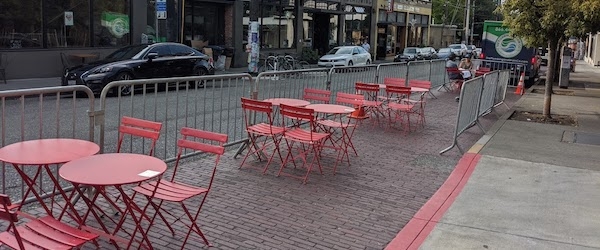What Does Ride-hailing Mean For Parking? Associations Between On-street Parking Occupancy And Ride-hail Trips In Seattle

In the June 2021 issue of Case Studies on Transport Policy, Ben Clark and Anne Brown of the University of Oregon published an article titled, "What Does Ride-hailing Mean For Parking? Associations Between On-street Parking Occupancy And Ride-hail Trips In Seattle." The paper draws on findings from their NITC research Investigating Effects of TNCs on Parking Demand and Revenues.
Ride-hailing companies, including Uber and Lyft, upset the traditional nexus between driving and parking. As cities consider parking policy reforms amidst a wave of app-based transportation systems, including ride-hailing, the associations between parking occupancy and ride-hailing remain unclear. Examining this association is critical as it may help understand the connections between ride-hailing and the built environment and help cities plan for a future of new transportation technologies that may alter the role of or need for on-street parking. This article examines associations between ride-hail trips and on-street parking occupancy in Seattle, Washington.
The researchers predict that on-street parking occupancy will start to decline if or when ride-hail trips are about 2.24 times greater than the average number of trips taken in 2016. Flexible and adaptable parking policies that can more quickly respond (or better yet, be proactive) to changing ride-hail demand will better manage the changes that may affect on-street parking.
Photo by Dongho Chang, Seattle Traffic Engineer
The National Institute for Transportation and Communities (NITC) is one of seven U.S. Department of Transportation national university transportation centers. NITC is a program of the Transportation Research and Education Center (TREC) at Portland State University. This PSU-led research partnership also includes the Oregon Institute of Technology, University of Arizona, University of Oregon, University of Texas at Arlington and University of Utah. We pursue our theme — improving mobility of people and goods to build strong communities — through research, education and technology transfer.
